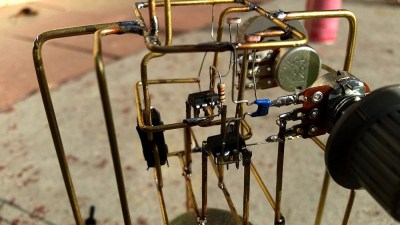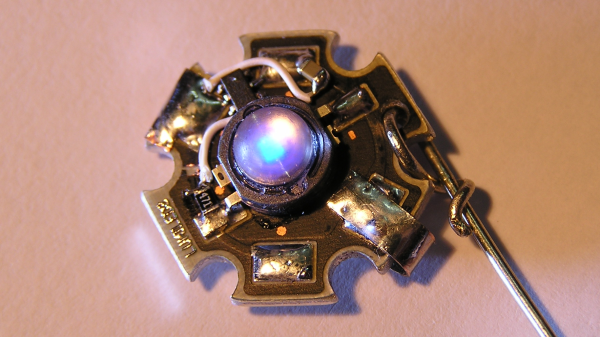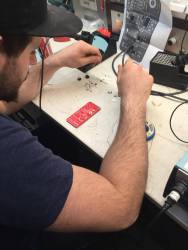You know how it is. You’ve got that new project running, and while it doesn’t consume much power, it also doesn’t give much indication of whether it’s functioning or just sitting there with a dead battery. What you need is an ammeter to check power consumption, even from across the room. And it just so happens that [Manuka] has Just The Circuit You Need, complete with a demonstration in the video after the break!
Oh sure, you could grab a cheap ammeter at your favorite tool import store or site, but those are bulky and take batteries. You could put in an LED that gets dimmer as voltage drops. But wait- is that the sun shining on it? or is it on? Or has something gone awry and it’s consuming too much power?
What [Manuka] gives us is a circuit that is designed to be built into your project or project’s power supply. Using only an ultra-bright white LED, red blinking LED, PNP transistor, and a diode, the circuit gives a strong visual indication of current consumption by blinking brighter and more frequently as current increases. With a bit of calibration, accurate measurements can be obtained. All of this is made possible by using the Flashing LED as a driver for the ultra-bright LED, which is a pretty slick hack!
Flashing LEDs have a great number of uses, like protecting your family from lions. Yes, really. Got a cool tip for flashing LEDs, blinkenlights, 555’s, or any odd thing that strikes your hackers fancy? Let the tip line know!
Continue reading “Need A Small, Cheap Ammeter? Blinkenlights To The Rescue!”



















